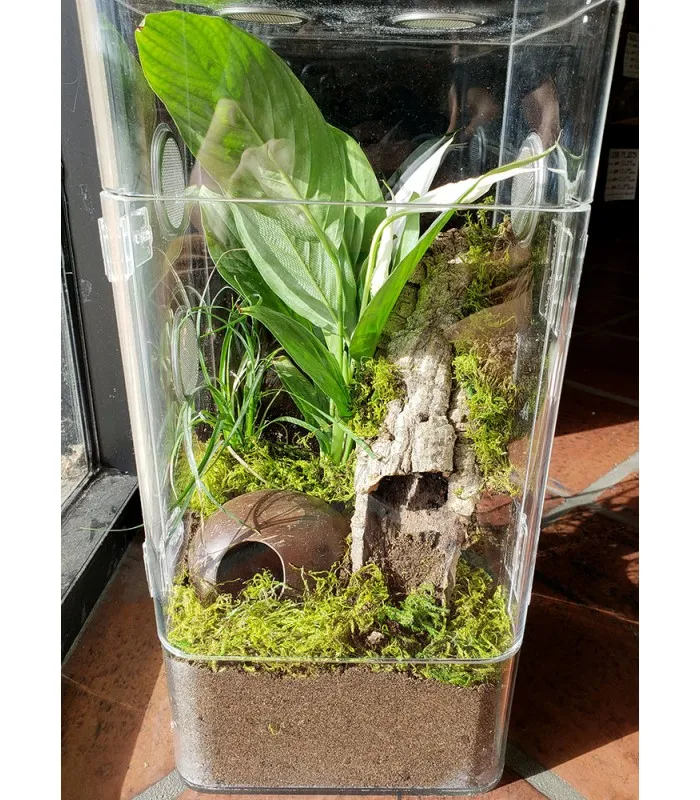Caring for an arboreal tarantula in the UK involves creating an ideal enclosure that mimics its natural habitat. This guide provides a comprehensive overview of setting up and maintaining a suitable environment for your arboreal tarantula, ensuring its health and well-being. From choosing the right size to maintaining proper humidity and temperature, this 101 guide covers everything you need to know to provide the best possible home for your fascinating pet.
Choosing the Right Arboreal Tarantula Enclosure UK
The first step in creating a comfortable habitat is selecting the right enclosure. Consider the size, material, and design to meet your tarantula’s needs. A well-chosen enclosure is crucial for the tarantula’s safety and your convenience in terms of maintenance. The enclosure should be escape-proof, well-ventilated, and easy to clean. Look for enclosures with secure lids and appropriate ventilation holes to prevent escapes and maintain airflow. Proper enclosure choice is the foundation for successful tarantula keeping. Always opt for a front-opening enclosure to minimize disturbance to your pet, which reduces stress and makes feeding and maintenance easier.
Size Matters Choosing the Right Enclosure
The size of the enclosure is one of the most critical factors. It should be proportional to the tarantula’s size, allowing enough space for movement, climbing, and burrowing if applicable. A good rule of thumb is to provide an enclosure that is at least three times the tarantula’s leg span in width, and the height should be sufficient for climbing. Avoid enclosures that are too large for smaller tarantulas, as this can make it difficult for them to find food and water. For juvenile tarantulas, a smaller enclosure is often preferable, which gives them a sense of security. As the tarantula grows, you can gradually move them to larger enclosures. Proper enclosure size reduces stress and promotes normal behaviors.
Factors to Consider Species Specifics
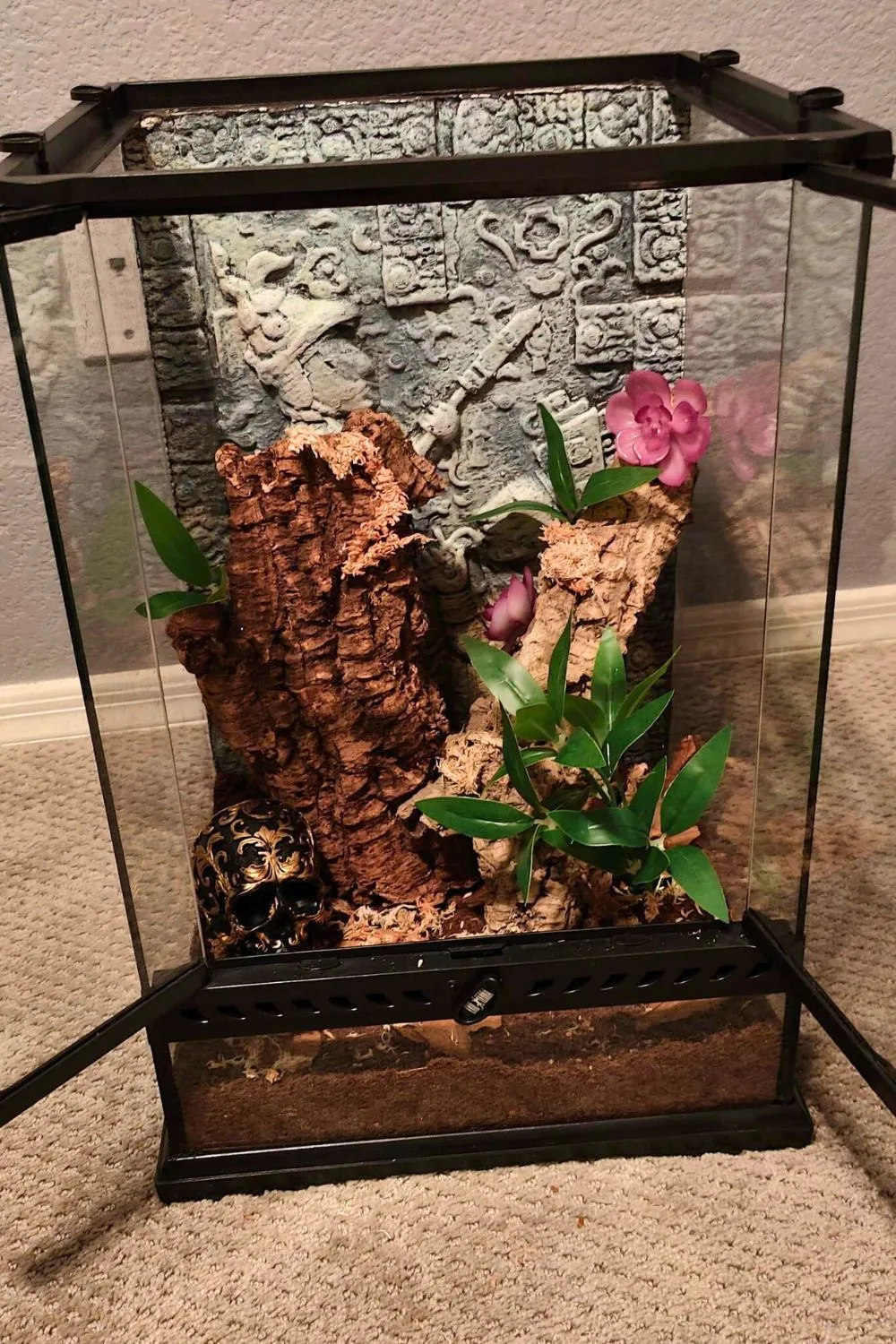
Different arboreal tarantula species have varying needs. Some may prefer a more humid environment, while others may thrive in drier conditions. Research the specific requirements of your tarantula species before setting up the enclosure. Some species are more prone to burrowing, while others spend most of their time climbing. Provide adequate height, climbing surfaces, and appropriate substrate based on the species’ natural habitat. Understanding the unique needs of your tarantula will help you create a more suitable and comfortable habitat, promoting its health and longevity. Always refer to specific care sheets available from reputable sources.
Ventilation The Key to a Healthy Enclosure
Proper ventilation is essential to prevent the buildup of mold, mildew, and harmful bacteria in the enclosure. Ensure the enclosure has adequate ventilation holes or mesh to allow for airflow. Avoid enclosures with poor ventilation, as this can lead to respiratory issues and other health problems for your tarantula. Proper ventilation helps maintain the correct humidity levels by preventing excessive moisture accumulation. Position the ventilation holes strategically to promote airflow throughout the enclosure. Regularly inspect the enclosure for signs of condensation and adjust ventilation as needed. A well-ventilated enclosure is critical for maintaining a healthy environment.
Essential Enclosure Features for Arboreal Tarantulas
An ideal arboreal tarantula enclosure should include several essential features. Provide a secure lid to prevent escapes, and make sure the enclosure is escape-proof. Include a substrate that supports burrowing or provides a naturalistic look, depending on the species. Add climbing structures like branches, cork bark, or artificial plants to provide opportunities for climbing and exploration. Offer a shallow water dish for drinking, and place it in an easily accessible location. Ensure the enclosure has proper ventilation to maintain a healthy environment. By incorporating these features, you can create a stimulating and safe habitat for your arboreal tarantula. Finally, make sure to provide a hide, such as a piece of cork bark or a commercial hide, where the tarantula can retreat to feel secure.
Substrate Selection for Your Arboreal Tarantula UK
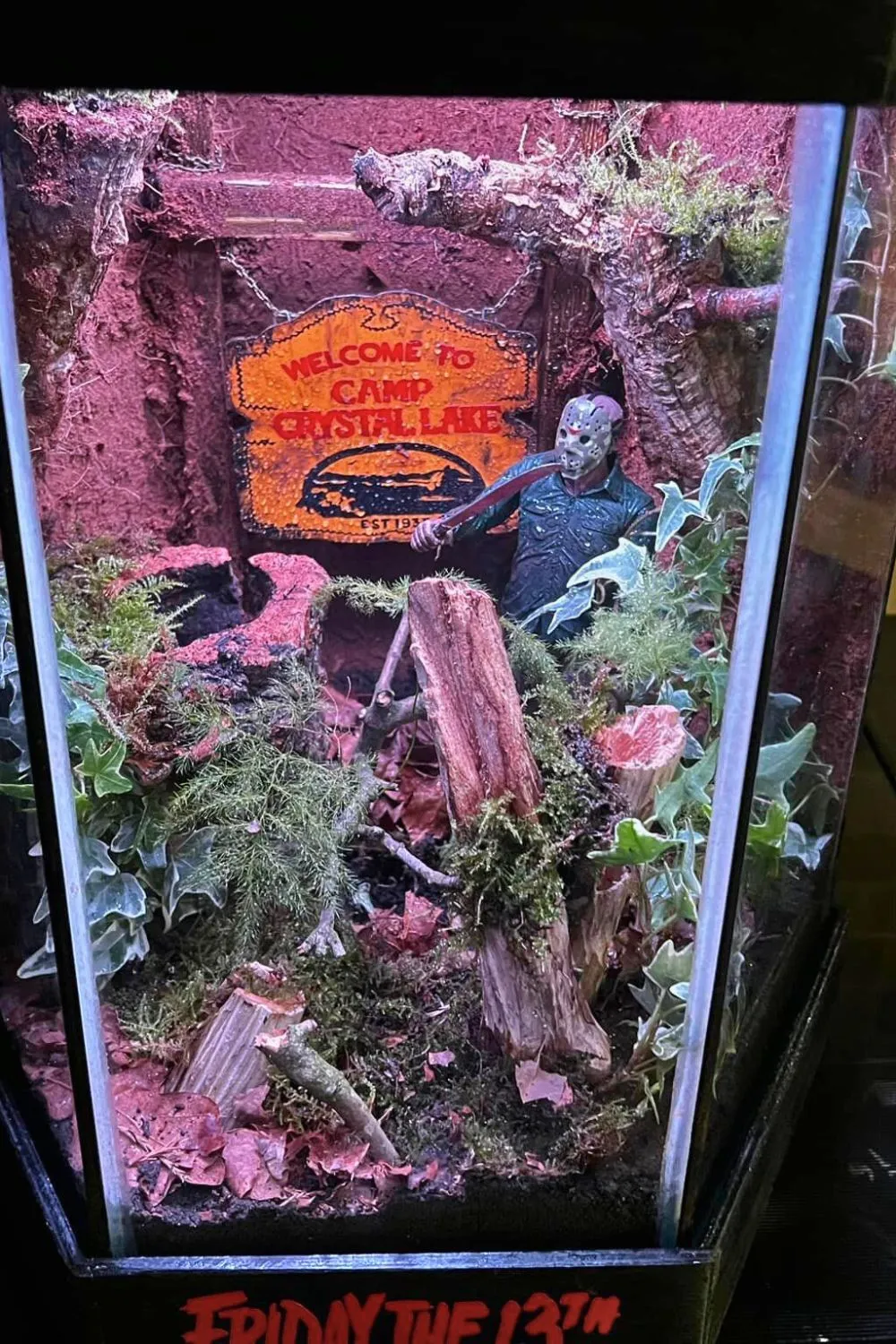
The substrate is the bottom layer of your tarantula’s enclosure and serves several crucial functions. It provides a surface for the tarantula to walk on, helps to maintain humidity, and allows for burrowing if the species is inclined. The choice of substrate depends on the specific needs of your tarantula species. For arboreal species, a substrate that holds moisture well is generally preferred. Common options include coco fiber, peat moss, and a mixture of these with other materials such as sphagnum moss. Avoid substrates that are dusty or may contain harmful chemicals. The substrate should be deep enough to allow for burrowing if your tarantula is a burrowing species, usually several inches. Regularly monitor the substrate for cleanliness and replace it as needed to prevent mold and bacteria growth. Proper substrate contributes to the overall well-being of your tarantula.
Importance of Humidity and Temperature
Maintaining the correct humidity and temperature levels is crucial for your arboreal tarantula’s health. Most arboreal tarantulas thrive in a moderate humidity range, typically between 60% and 80%, but this can vary depending on the species. Use a hygrometer to monitor humidity levels accurately. To increase humidity, mist the enclosure with water, especially during molting periods. Temperature should be maintained at a consistent level, usually between 75°F and 85°F (24°C and 29°C). Use a thermometer to monitor the temperature and provide a heat source if necessary, such as a heat mat or a ceramic heat emitter. Avoid direct sunlight, as this can overheat the enclosure. Proper humidity and temperature levels contribute to successful molting, healthy eating habits, and overall well-being.
Creating a Naturalistic Environment
A naturalistic environment is more than just functional; it enhances the quality of life for your tarantula. Mimic the natural habitat of your tarantula by adding elements like branches, cork bark, and artificial plants. These elements provide climbing opportunities, hiding places, and visual enrichment. The addition of live plants, if done carefully, can also help to maintain humidity and add to the natural look. Ensure all decorations are safe and non-toxic, and that they are securely placed to prevent injury. A well-designed enclosure not only provides a healthy environment but also allows you to observe your tarantula’s natural behaviors. Try to arrange the enclosure to provide areas for both hiding and open exploration.
Decorating for Arboreal Tarantulas
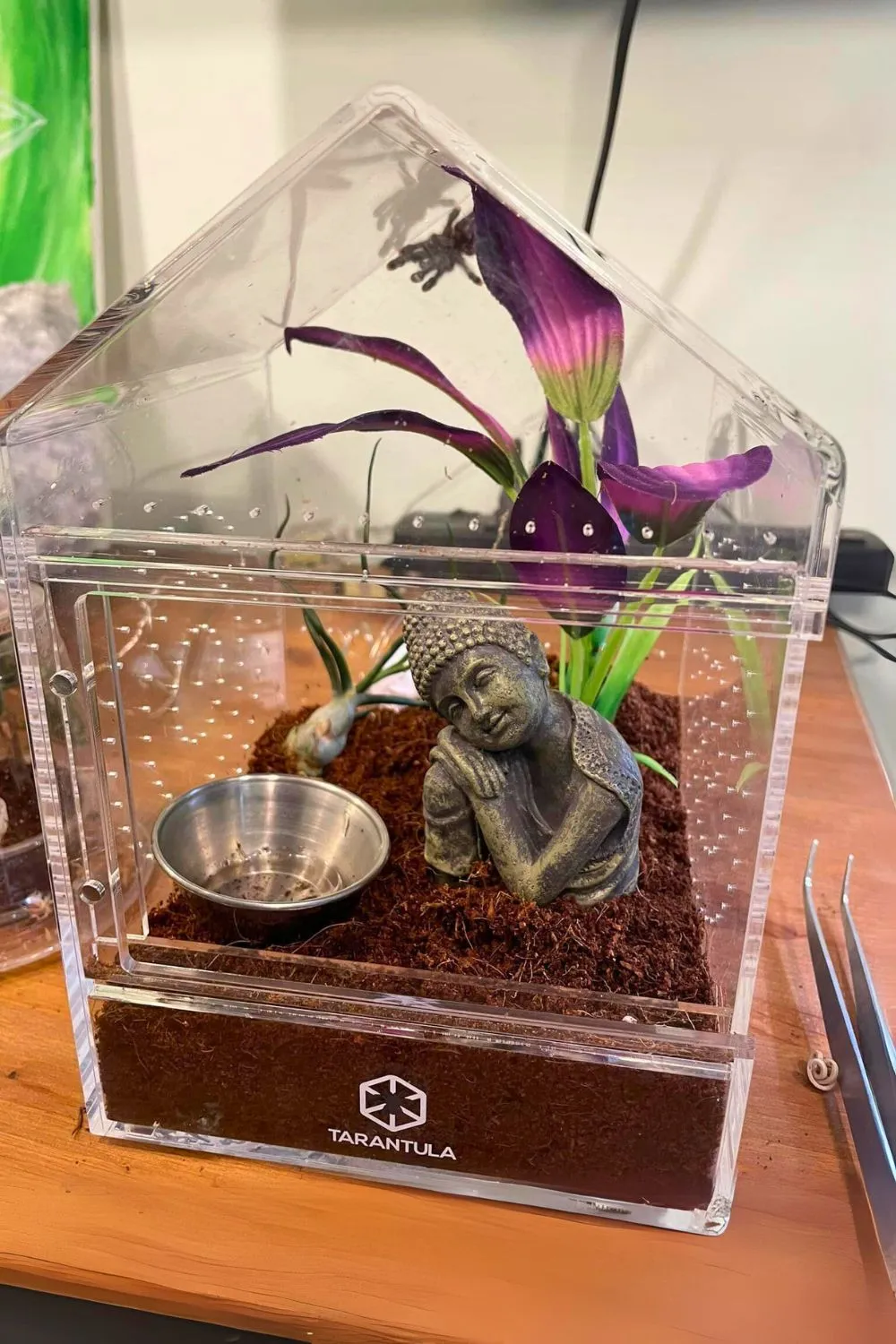
Decorating the enclosure enhances the habitat, making it more stimulating for your tarantula. Use branches, cork bark, and artificial plants to create a layered environment that mimics the tarantula’s natural surroundings. Arrange the decorations to provide climbing surfaces, hiding spots, and areas for exploration. Ensure all decorations are clean, non-toxic, and free from sharp edges. Consider adding a background to the enclosure to give your tarantula a sense of security. Make sure the decorations do not obstruct ventilation or the tarantula’s access to food and water. Avoid using items that could be harmful, such as overly small decorations that could be ingested. A well-decorated enclosure promotes a more enriching and enjoyable experience for both you and your tarantula. Consider using silk plants as they are easy to clean and don’t require any specific lighting.
Providing Climbing Structures
Arboreal tarantulas are climbers by nature, so providing appropriate climbing structures is essential. Branches, cork bark, and artificial plants are excellent options. Arrange the climbing structures to provide multiple pathways and levels within the enclosure. Make sure the structures are securely placed to prevent them from falling and potentially injuring your tarantula. The climbing structures should allow the tarantula to move freely and explore its environment. The climbing structures will help the tarantula exercise and feel secure. Also ensure the structure is large enough so the tarantula can fully molt without hindrance. Provide variety in the climbing options to keep the environment stimulating.
Feeding and Watering Your Arboreal Tarantula
Proper feeding and watering are essential for the health and well-being of your arboreal tarantula. Feed your tarantula appropriately sized insects based on its age and size. Crickets, roaches, and mealworms are common choices. Provide fresh water in a shallow dish at all times, and ensure the water is clean and accessible. Remove uneaten food promptly to prevent mold and bacteria growth. The feeding frequency and amount will vary depending on the tarantula’s species and age. Observe your tarantula’s eating habits and adjust feeding accordingly. Always be mindful of the tarantula’s molting cycle; do not feed during this time, or you could injure the tarantula. Remember, providing a healthy and consistent food and water supply is key to maintaining your pet’s well-being.
Best Practices for Feeding
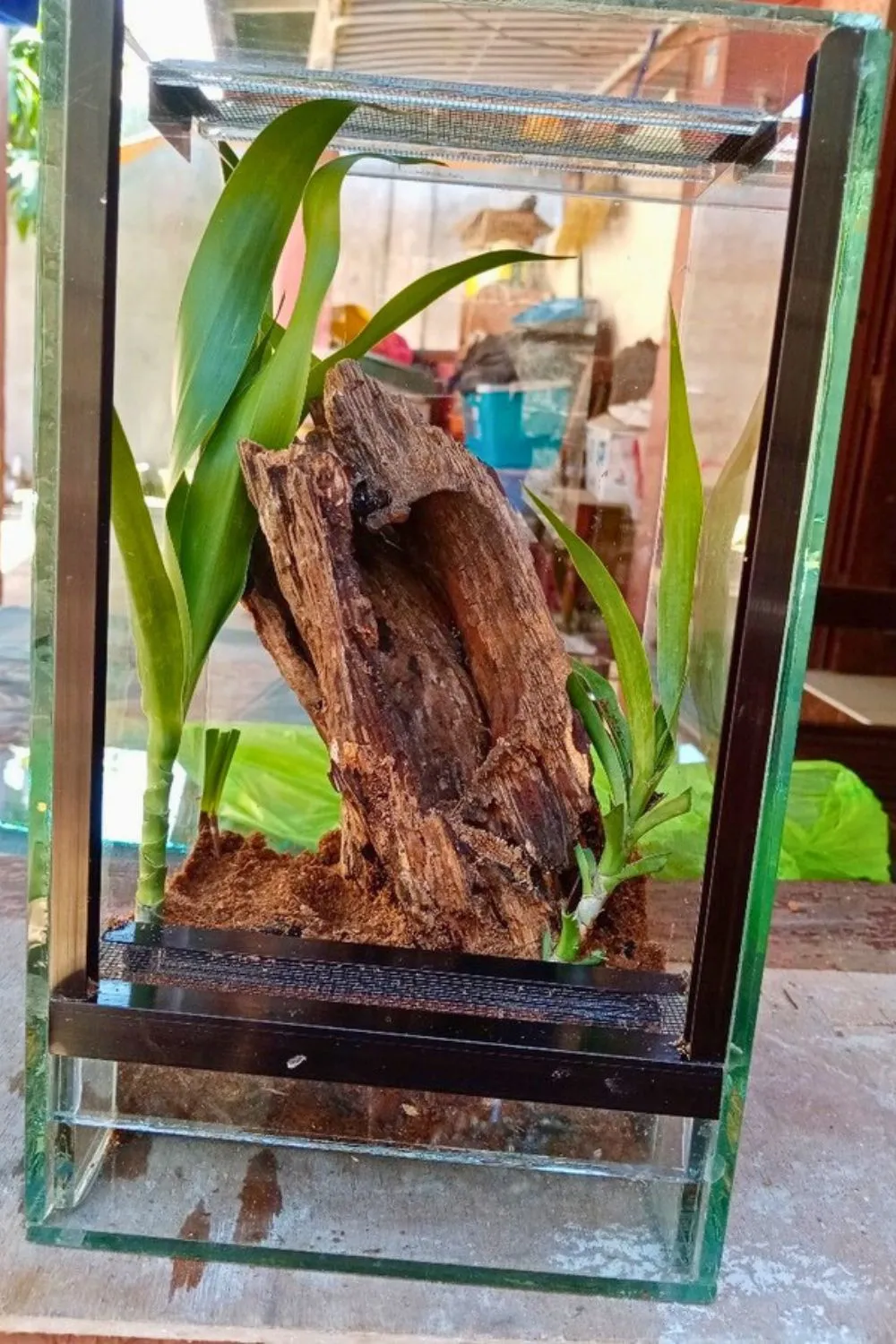
Feeding your arboreal tarantula correctly is crucial for its health and growth. Offer appropriately sized insects, avoiding insects that are larger than the tarantula’s body. Feed juveniles more frequently than adults. Remove uneaten insects within 24 hours to prevent them from stressing your tarantula or causing it harm. Vary the diet to provide a range of nutrients. Offer pre-killed insects to younger tarantulas or those that are known to be skittish to ensure they get the food and don’t risk being hurt by live prey. Never overfeed your tarantula, as this can lead to health problems. The frequency of feeding depends on the species and the growth phase of the tarantula, but adults are often fed once or twice a week. Watch your tarantula’s abdomen; if it appears overly plump, reduce the feeding frequency.
Watering Techniques for Arboreal Tarantulas
Providing fresh, clean water is vital for your tarantula’s hydration. Use a shallow water dish that the tarantula can easily access without risk of drowning. Change the water regularly, at least every other day, to keep it fresh and prevent the growth of bacteria and algae. Ensure the water dish is stable and won’t tip over. In addition to the water dish, mist the enclosure lightly with water to increase humidity, especially during molting. Be careful not to over-mist, as this can create an overly humid environment and promote mold growth. Observe your tarantula’s behavior and adjust watering as needed. Water is essential for hydration and the molting process. Regularly monitor the water level and cleanliness of the water dish to maintain the health of the tarantula.
Cleaning and Maintenance Your Arboreal Tarantula Enclosure
Regular cleaning and maintenance are essential for maintaining a healthy environment for your arboreal tarantula. Establish a consistent cleaning schedule to remove waste, uneaten food, and other debris. Spot clean the enclosure regularly, removing any visible waste or debris. Replace the substrate periodically, typically every few months, or more frequently if it becomes soiled. Clean the water dish and other enclosure decorations during routine maintenance. A well-maintained enclosure promotes hygiene and reduces the risk of disease. Proper cleaning prevents the build-up of harmful bacteria and ensures a clean environment for your tarantula. Establish a routine to ensure the cleaning tasks are performed regularly. Keep the enclosure well-maintained to support a healthy and happy tarantula.
Regular Cleaning Schedule
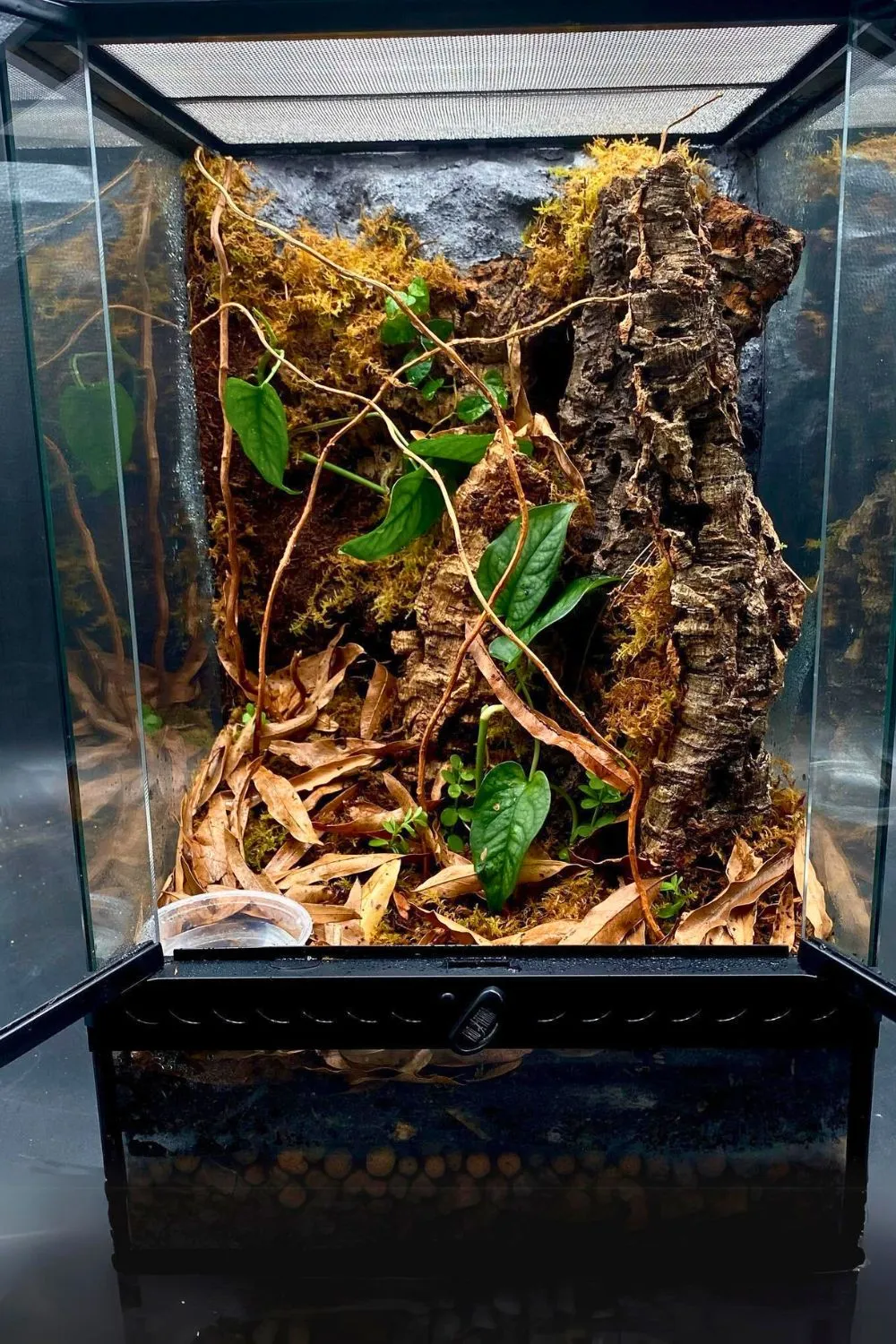
A regular cleaning schedule is essential for maintaining a healthy enclosure. Spot clean the enclosure daily or every other day, removing any waste or uneaten food. Change the water in the dish regularly, ideally daily. Perform a more thorough cleaning weekly or bi-weekly, which may include cleaning the water dish, decorations, and removing any visible substrate waste. Replace the substrate every few months or more frequently if it becomes soiled. Use a safe and non-toxic cleaning solution when cleaning the enclosure. Avoid harsh chemicals, as these can be harmful to your tarantula. A consistent cleaning routine helps to control the environment and prevent the spread of diseases. Plan your cleaning schedule and stick to it to ensure optimal cleanliness.
Dealing with Mold and Mildew
Mold and mildew can be a common problem in tarantula enclosures, especially in humid environments. Prevent mold by ensuring proper ventilation and avoiding excessive moisture. If mold appears, remove the affected substrate and decorations immediately. Clean the enclosure thoroughly with a safe cleaning solution, such as a diluted vinegar solution. Reduce humidity levels and increase ventilation to prevent the mold from returning. Monitor the enclosure regularly for any signs of mold or mildew. Maintaining a dry environment and good hygiene are key to preventing the growth of mold and mildew. Act swiftly if mold or mildew is spotted, ensuring the health of your tarantula. If you cannot remove the mold or mildew, the enclosure may need to be replaced.
Common Mistakes to Avoid
Several common mistakes can negatively impact the health and well-being of your arboreal tarantula. Understanding these mistakes will help you avoid them. Overcrowding, improper ventilation, incorrect substrate and humidity levels, and poor hygiene are common issues. Make sure to research the specific needs of your tarantula species to avoid these pitfalls. Careful attention to detail and a good understanding of your tarantula’s needs will result in a happier and healthier pet. Always be proactive in the care of your tarantula.
Overcrowding and Improper Ventilation
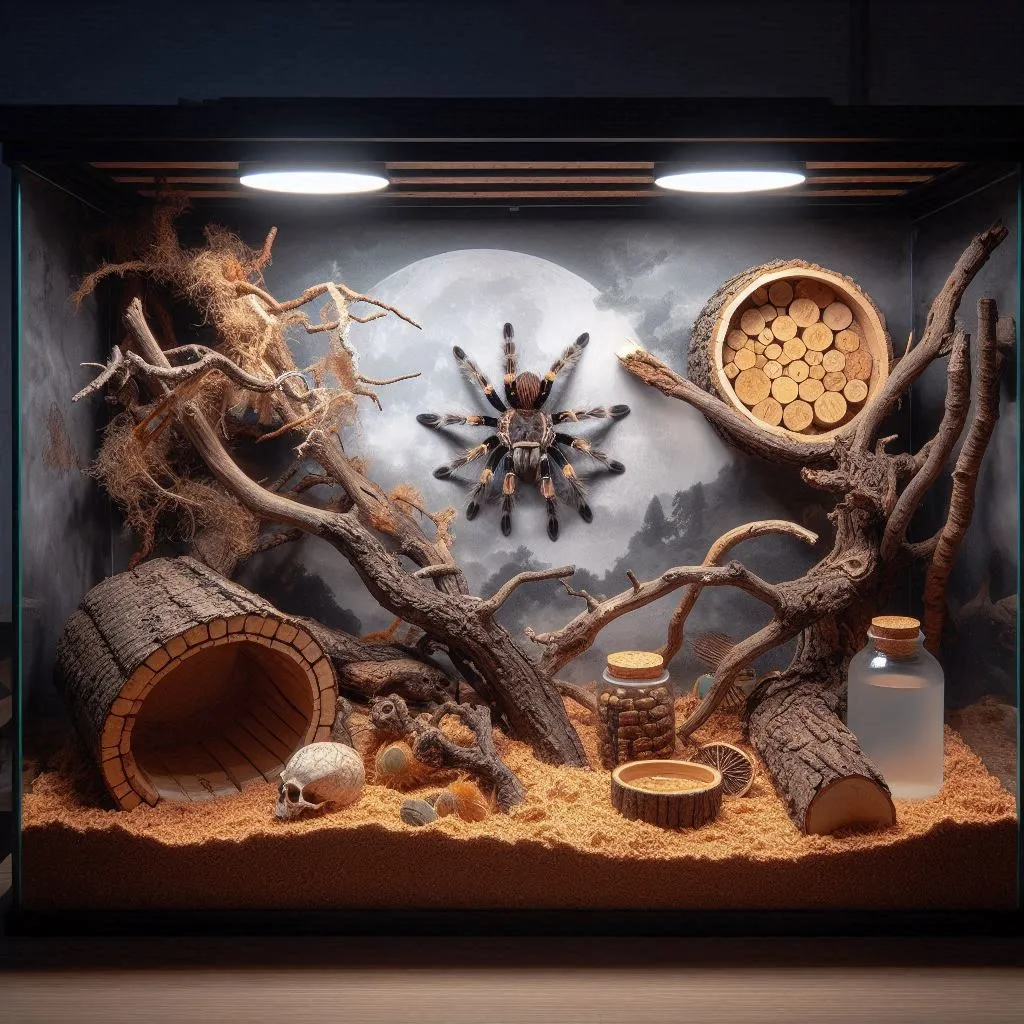
Overcrowding and inadequate ventilation can be detrimental to your tarantula. Avoid housing multiple tarantulas in the same enclosure, as this can lead to stress, competition for resources, and even cannibalism. Ensure your enclosure has adequate ventilation to prevent the buildup of humidity and the growth of mold and bacteria. Choose an appropriately sized enclosure for your tarantula, and provide sufficient space for movement and exploration. Overcrowding and poor ventilation compromise the health of your tarantula. Proper planning and setup prevent these common mistakes. Regularly inspect your enclosure to make sure ventilation is adequate and the environment is safe.
Incorrect Substrate and Humidity Levels
Selecting the wrong substrate and failing to maintain proper humidity levels can be detrimental to your arboreal tarantula. Use a substrate appropriate for the species, ensuring it retains enough moisture without becoming waterlogged. Monitor humidity levels using a hygrometer, and adjust as needed to meet the specific requirements of your tarantula. Incorrect substrate and humidity can lead to problems, such as failed molts and respiratory infections. Research the needs of your specific species to create the right environment. Regularly assess the humidity levels to ensure the comfort and health of your tarantula. Proper substrate selection and humidity maintenance are essential for the tarantula’s well-being.
Caring for an arboreal tarantula requires dedication, knowledge, and attention to detail. By following this 101 guide, you can create a thriving environment for your fascinating pet, ensuring its health and happiness. Remember to research the specific needs of your species and to regularly monitor and maintain the enclosure. Enjoy the rewarding experience of keeping and observing your arboreal tarantula in a well-designed habitat!
